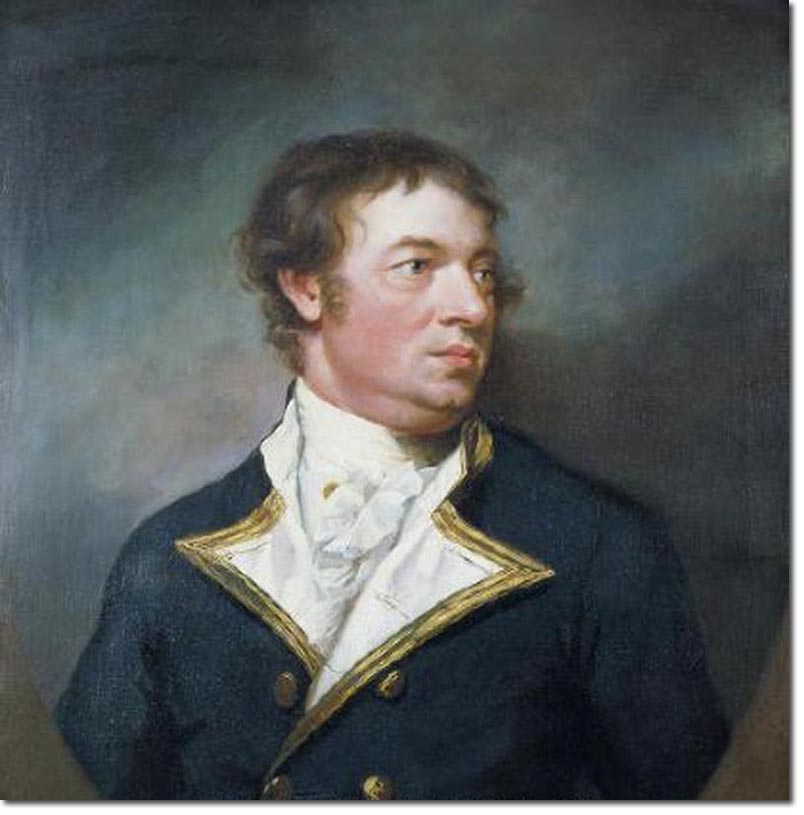|
|


|
|
Tobias Furneaux was the first person in history to circumnavigate the globe in both directions. Tobias Furneaux had been born at his family estate at Swilly on the outskirts of what was then Devonport but is now firmly within Plymouth's city boundaries and the location of a giant housing project built by the City Council in the 1920s and 30s and called North Prospect.
He joined the Royal Navy in 1755 but it was with his voyage with HMS Dolphin that he made his name in 1767. Despite being a lowly second lieutenant, he frequently took command of the ships due to illness to the Captain and the first lieutenant. The ship's mission was to chart the Pacific and much of this was accomplished by the junior second lieutenant. Whilst in command he discovered Tahiti and claimed it for King George III. The location of this island was fortuitous as it would prove invaluable for Captain Cook's first voyage in order to track the transit of Venus in 1769. This connection and the accuracy of his surveying may explain why Cook requested that Furneaux accompany him on his second voyage. Tobias Furneaux had the honour of being appointed as the commander of HMS Adventure to accompany Captain Cook on his second voyage. He was highly regarded by Cook and did much to map the islands in and around Tasmania during this voyage. The account of this famous voyage was jointly published by Furneaux and Cook as: This voyage was a classic example of using science and exploration to further imperial ambitions. There was still great speculation that a southern continent or landmass existed that was inhabitable and therefore suitable for colonisation or trade. It was the mission of Cook and Furneaux to found out if one existed. As if underlying the scientific importance of the journey, the expedition took botanists, artists, zoologists and astronomers with them to record and plot all that they saw. They failed to find the fabled southern habitable continent but found enough ice bergs and icy conditions to know that any colonisation or trading possibilities were non-existent. However, on their way back north they came across Tasmania which was extensively surveyed by Furneaux and even had a chain of islands named by Cook in his honour. The expedition went on to Australia and New Zealand before visiting the Society Islands. Whilst there, Furneaux identified and selected a local person to accompany the ship back to Britain. He went by the name of Omai and stayed with Joseph Banks for two years and was presented to the King. Furneaux was separated from Cook through poor weather and with a diminished crew due to being attacked by Maoris in New Zealand. He therefore returned to England skirting the Antarctic looking for a landmass but contenting himself that no such habitable continent existed. His return journey meant that he had become the first person to ever circumnavigate the planet in both directions. He went on to command HMS Syren in the American Revolutionary Wars. The Syren was lost on 6 November 1777 off Rhode Island and Furneaux was taken prisoner. On being released the following year he took part as a volunteer on board the Isis in a single ship engagement against the French ship Cesar. He died at the age of 46. He was buried in the family burial chamber in the church at Stoke Damerel where a plaque marking his achievement can still be seen. |
Empire in Your Backyard: Plymouth Article | Significant Individuals
Armed Forces | Art and Culture | Articles | Biographies | Colonies | Discussion | Glossary | Home | Library | Links | Map Room | Sources and Media | Science and Technology | Search | Student Zone | Timelines | TV & Film | Wargames